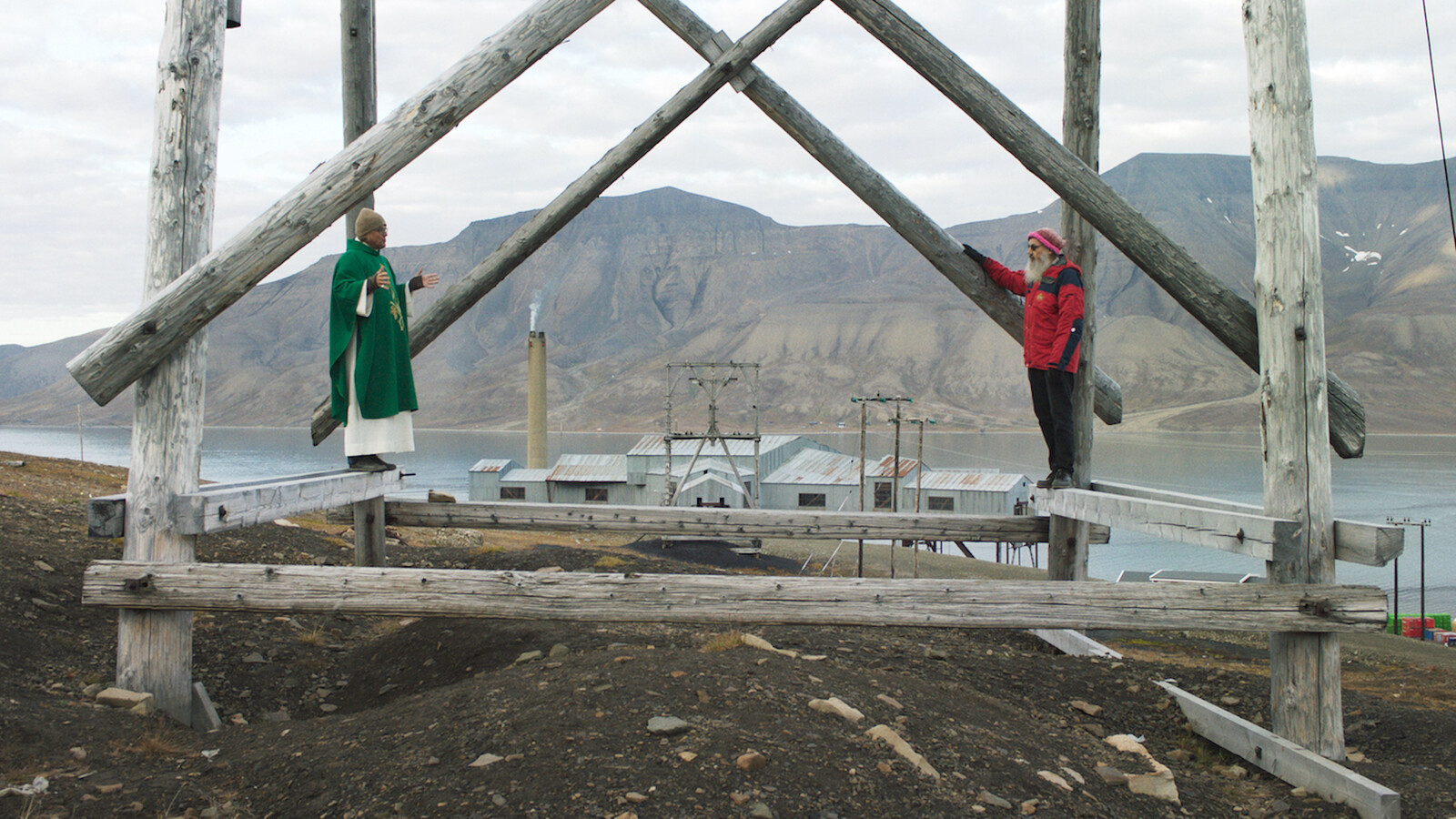Jumana Manna’s first US museum exhibition traces the violence inflicted through infrastructures designed to control, transform, protect, or even destroy the natural environment, while recognizing the ways in which the land, in its mutations and transformations, resists in order to survive. Knowledge produced from and about the land emerges as a site of struggle, both an apparatus of hegemony and oppression and a potential tool for defiance and liberation.
The exhibition includes recent and newly commissioned sculptural works; pieces from the multidisciplinary Palestinian artist’s ongoing “Cache Series” populate the main gallery space. These large, smooth, earth-toned ceramic sculptures seem capable of shape-shifting despite their sturdiness. Inspired by the khabyas—the storage vessels attached to homes throughout the Levant that have been rendered superfluous with the proliferation of modern means of refrigeration—they capture these structures in various states of disintegration and ruination. Some share recognizable features of the original khabya while others have morphed into unfamiliar forms, alien-like creatures whose disfigurations speak to their incongruity in the contemporary landscape, glossy monuments to their own demise in the face of industrialized means of producing and conserving food.
Throughout the exhibition, Manna borrows from the visual and organizational language of archival institutions; the steel grates which she uses to exhibit her various sculptural works evoke other spaces of knowledge production and preservation, while the cement blocks are reminiscent of construction sites. The everyday and mundane are recontextualized and transformed into objects to be exhibited. In Old Bread International (2022), ceramic sculptures of loaves are laid out on newspapers, mimicking the practice of leaving leftovers on ledges or hanging in bags for hungry passersby rather than throwing them away. The sculptures, in differing stages of decay, are testament both to bread’s role as a source of life, and the excesses that generate food waste.
At the entrance to each of two screening rooms hangs a small collage, a recent development in Manna’s practice. In Mountain (2018) and Weed Bouquet (2020)—a landscape and still life respectively—she uses labels from discarded household cleaning product containers to create compositions that both evoke and undermine Western genres. Colorful and vibrant, these textured works on paper are quietly compelling. The repurposing of packaging is at once unnerving and reassuring; if the ability to render waste materials alluring is initially appealing, such deception ultimately serves as a reminder of the empty promises of these contrived scenes.
Manna’s film Wild Relatives (2018) follows the journey of seeds withdrawn from the Svalbard Global Seed Vault in the Arctic (the so-called “doomsday vault”) and sent to the International Center for Agricultural Research in the Dry Areas (ICARDA), after it relocated its headquarters from Aleppo to Lebanon’s Bekka Valley. The premise sets out to reveal the tensions between industrial and organic agriculture, but the story that eventually emerges is one of displaced farmers and migrant laborers escaping the violence following the 2011 Syrian revolution. Much is left unsaid, as if Manna is warning us against heeding the seemingly straightforward narrative delivered in her voiceover. Throughout the film, her camera negotiates complex dynamics as she moves a little too close to her Syrian subjects who, dressed in floral prints while dancing and smoking between their shifts in the field, seem to lead almost idyllic lives, while their Norwegian counterparts are often kept at a cold, sterile distance.
In 1977, Ariel Sharon, as Minister of Agriculture, added za‘atar (wild thyme), to a list of protected natural species; the foraging, possession, or trade of the plant was criminalized, carrying a penalty of up to three years imprisonment. Based on almost no evidence, the ban was likely motivated by his recognition of the symbolic value of the herb in Palestinian culture. In 2005, as Prime Minister and Minister of Environmental Protection, Sharon modified the list once more, to include ‘akkoub (gundelia), another Palestinian staple. More than any other work in the exhibition, Foragers (2022) gets to the heart of the ever-expanding nature of occupation: the way both the colonizer and the colonized hold a deep-seated understanding of the various forms of knowledge rooted in the land, in the soil itself. Focusing on an intimate and familiar world—Manna grew up foraging with her family—Foragers maintains a more consistent relationship with its Palestinian subjects than the artist’s previous film, as we follow them from the hills, through the streets, and into their kitchens. In footage showing the interrogations of Palestinians accused by the Israel Nature and Parks Authority of foraging, we never see the officers. The camera instead remains focused on the defiant victims of these laws, insisting on their dignity and agency.
Through a combination of documentary and fiction, both films reveal that there is much money to be made from the plight of the displaced and dispossessed; the construction of refugee camps is the more profitable use of agricultural land, while ‘akkoub and za‘atar cultivated in kubbutz farms are lucrative crops. Curatorially, however, the full political potential of “Break, Take, Erase, Tally” feels somewhat blunted. Perhaps it is the isolation of the films from the sculptural works, or the equation—as sometimes implied in the wall texts—of settler colonialism with other neoliberal power structures at play. This risks, in turn, leading to a celebration of the work as invested in a “heady ambiguity,” as a recent New York Times review suggested, thereby denying the clarity of oppression exhibited.1 If anything, Manna’s work cautions against allowing alleged “complexities” to mask hierarchies of power.
A concurrent solo exhibition of Jumana Manna’s work, “Late Night Strollers,” is also on view at Brief Histories, New York through November 19, 2022
Will Heinrich, “In Jumana Manna’s Film, a Wild Plant Crosses the Political Line,” The New York Times (September 29, 2022), https://www.nytimes.com/2022/09/29/arts/design/jumana-manna-film-foragers-review.html.







